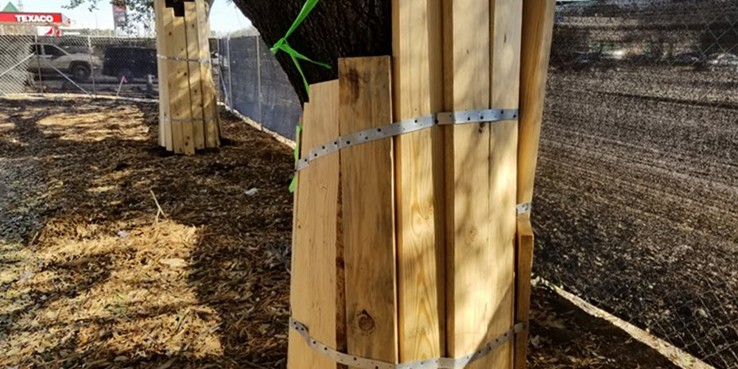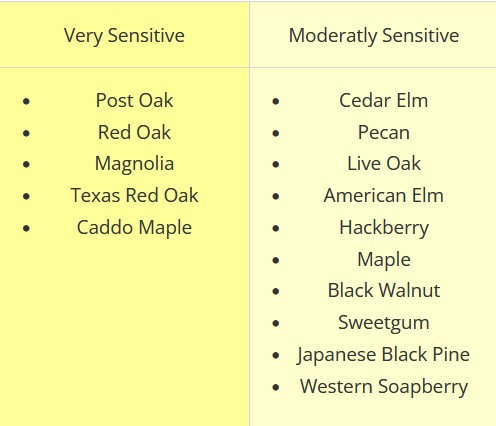
Construction Injury to Trees

Protecting trees during construction can save a valuable asset. Photo by Bill Seaman.

Published July 20, 2010, By ARBORILOGICAL SERVICES
Construction and remodeling around existing trees can lead to serious damage and in many cases mortality of existing trees.
There are a number of species which can only tolerate minor changes to the environment before they begin to decline in health and vigor. The Post Oak is one of these species. An above ground visible deterioration of foliage may not become evident for several years after the change has taken place. One of the biggest factors which typically goes unnoticed is that many of these trees have evolved on the site with the annual rainfall of 30 to 35 inches per year. Once we develop a site and add an irrigation system, the amount of moisture falling on the property is doubled. Existing trees, especially with root damage, will not tolerate this dramatic increase in moisture.
POST OAK (Quercus stellata)
The Post Oak is common in west Dallas county, Collin county, and Parker county. They tolerate little if any change within the environment surrounding their root zone. They tolerate additional moisture poorly as well as most landscape development. The Post Oak is commonly reported to die overnight. This is actually from many years of root deterioration. Many times this deterioration is accelerated by increased moisture. We attempt to improve the environment for redevelopment of the root system with deep root fertilization programs. This process not only provides a high quality nutrient solution to the root zone, but also aerates or adds oxygen to the root zone. Many times these programs may be designed to be very aggressive with a series of feedings during a season. Site conditions such as limited root area, soil compaction and tree condition will dictate which type of program your consulting srborist may design for your trees. Budget considerations are also a factor.
In most cases we are attempting to slow or stop the deterioration of the tree or trees. As frustrating as it may sound, in many cases we hope the trees look no worse next season. You must remember that many of these trees have developed their root system over the last 30 to 50 years. The development has within a matter of months eliminated a majority of the root system. It can take several years to visually see improvement. You must be patient.
Pruning to remove green or live tissue is NOT recommended. We believe that the more leaf area a tree has, the more usable food is being produced. Many times your consulting arborist may recommend deadwood removal ONLY.
Reducing the amount or frequency, or both, of your irrigation output will almost always be recommended. Many irrigation audits estimate that well over 75% of homeowners with automatic systems over water.
It is difficult to tell exactly how much you should run your particular system because of all the variables to consider. However, we recommend to start at three times a week and 15 minutes per station. If your property has slope to it, it may be advisable to run the lower sections at a reduced time for the higher areas will be draining to those lower areas of the property.
We also recommend to avoid water-loving plant material (such as Impatiens, Caladiums, Azaleas, etc.) within the canopy area of Post Oaks, as these flowers will only tempt you to water more frequently.
We really do not feel comfortable with Post Oaks which have sustained root injury for several years after the impact or change. We have seen mature trees fail ten and fifteen years after development.
The following lists will help summarize this sensitivity of tree species common to North Texas:


